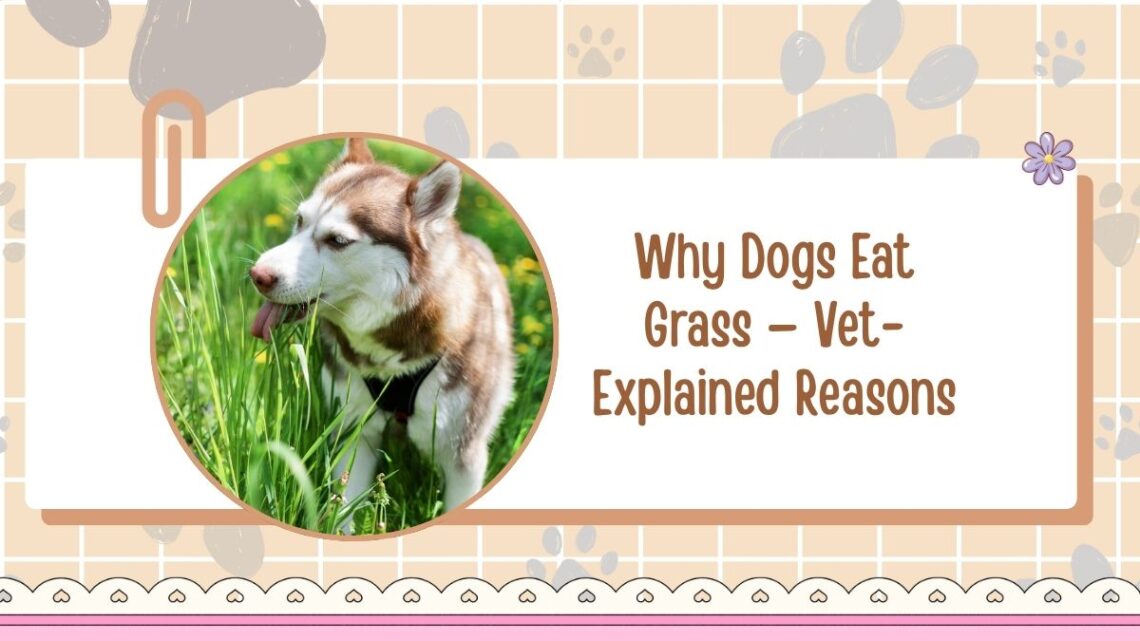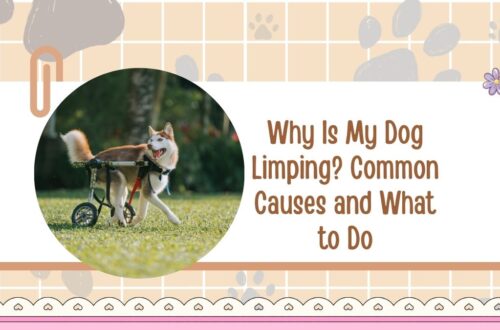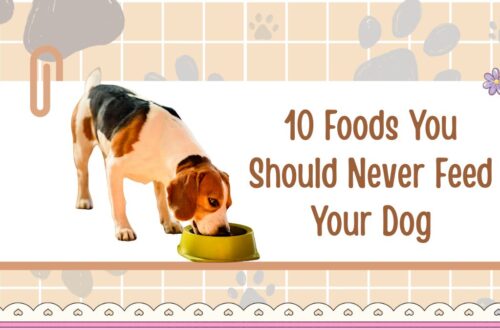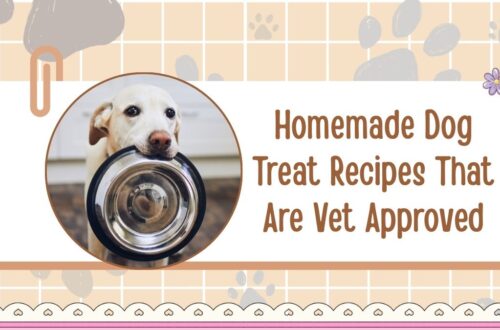Dogs munching on the lawn can look alarming—especially if vomiting follows. The latest veterinary insights show that grass-eating is common, usually normal, and not automatically a sign of illness, though there are important risks and red flags to know.
Below you’ll find up-to-date, vet-explained reasons, what the data actually shows, how to respond at home, and when to call your veterinarian.
How Common Is Grass-Eating In Dogs?
Large owner surveys conducted by veterinary researchers found that most dogs occasionally eat plants (especially grass).
In a widely cited dataset of 1,571 dogs, about 68% ate plants daily or weekly; only ~8–9% showed signs of feeling ill before eating grass, and ~22–23% vomited afterward. In other words, most grass-grazing isn’t preceded by nausea, and vomiting isn’t guaranteed.
Key Takeaways From Recent Evidence
- Common behavior: The majority of dogs will nibble grass at least occasionally.
- Nausea isn’t the main driver: Only a small minority seem sick beforehand.
- Vomiting occurs, but not always: Roughly one in five grass-eaters vomits afterward.
Vet-Explained Reasons Dogs Eat Grass
1) Normal Foraging & Instinct
Domestic dogs are opportunistic omnivores. For many, grass is simply interesting roughage—a normal part of exploratory foraging behavior that doesn’t indicate disease.
Younger dogs, in particular, graze more frequently and are less likely to be ill before or after compared with older dogs.
2) Gastrointestinal Self-Soothing (Sometimes)
Some dogs do eat grass when they feel queasy, and the mechanical stimulation of blades can trigger regurgitation or vomiting—a potential short-term relief mechanism.
However, population data shows this is not the predominant reason overall. Think of it as one possible explanation, especially if your dog targets grass during an acute upset.
3) Fiber & Gut Motility
Grass provides insoluble fiber, which can bulk stool and modulate transit time. Some dogs may be seeking roughage if their current diet is low in fiber or if they experience intermittent constipation or soft stool. Adjusting dietary fiber (under vet guidance) can reduce lawn-munching in these dogs.
4) Boredom, Anxiety, Or Learned Habit
Dogs may graze out of boredom, stress, or for sensory enrichment—a bit like chewing a stick or toy. Meeting enrichment needs (sniff walks, puzzle feeders, chew options) often decreases the behavior.
5) Rarely: Pica Or Nutrient Gaps
Persistent, non-food ingestion (pica) can be linked to underlying medical or nutritional issues. If your dog obsessively eats non-food items (not just grass), or shows weight loss, anemia, or lethargy, your vet may test for GI disease, endocrine issues, or deficiencies and recommend a complete, balanced diet review.
Real Risks You Should Manage
Pesticides, Herbicides & Fertilizers
The grass itself is usually harmless; chemicals on the grass are not. Ingestion of treated lawns can cause drooling, vomiting, diarrhea, tremors, or worse.
Keep dogs off recently treated areas and ask landscapers about pet-safe products and re-entry intervals. If exposure occurs and your dog shows symptoms, call your vet promptly.
Parasites In Soil & Fecal Residue
Dogs can ingest roundworm or hookworm eggs when pulling up grass near contaminated soil. Maintain year-round parasite prevention and regular fecal testing per your vet’s schedule.
Foxtails & Cheatgrass (Seasonal Hazard)
In many regions, barbed seed heads from foxtails/cheatgrass can embed in the nose, ears, eyes, skin, or lungs, migrating forward and causing pain, infection, abscesses, or emergency airway problems.
Prompt removal is the only treatment—seek veterinary care immediately if you suspect exposure (sudden sneezing fits, pawing at face/ears, painful swellings, draining tracts).
What To Do If Your Dog Eats Grass
- Check the context. Was this a quick nibble during a walk, or repeated grazing with vomiting? Occasional nibbling in a bright, energetic dog without GI signs is usually okay. Escalate if you see compulsive eating, lethargy, diarrhea, blood, or weight loss.
- Rule out chemical exposure. Avoid treated lawns, public medians, and edges that may be sprayed. If uncertain, redirect and offer a safe chew or toy.
- Leash-manage and redirect. Teach a reliable “leave it” and “let’s go.” Provide enrichment (sniff walks, training games, food puzzles) to reduce boredom-driven grazing.
- Review diet & fiber. Ask your vet about fiber-tuning (e.g., diet with appropriate crude fiber, or measured additions like plain canned pumpkin or vet-recommended fiber supplements) to support stool quality.
- Stay current on preventives. Use broad-spectrum parasite control and routine fecal checks, especially for dogs that snuffle groundcover or frequent dog parks.
- Know regional plant hazards. In foxtail areas, avoid overgrown fields in peak season, keep the coat trimmed, and perform nose/ear/paw checks after outings. Seek care immediately for suspicious signs.
When To Call The Vet Immediately
- Repeated vomiting tied to grass-eating or vomiting with blood
- Diarrhea, black/tarry stool, abdominal pain, or lethargy
- Sudden obsession with eating non-foods (pica) or weight loss
- Signs of chemical exposure (tremors, drooling, collapse)
- Suspected foxtail/cheatgrass encounter (sneezing fits, pawing at nose/ears, painful lumps)
Quick Reference Table: Why Dogs Eat Grass & What To Do
| Likely Reason | What It Looks Like | Evidence Snapshot | What To Do | Risk Level |
|---|---|---|---|---|
| Normal Foraging/Instinct | Occasional nibbling, otherwise normal | Majority of dogs eat plants; illness before eating is uncommon | Allow brief sniffing; redirect if excessive | Low |
| GI Self-Soothing | Nibbles then vomits once; feels better | ~22% vomit after grass; not the main driver overall | Monitor; with repeated vomiting, call your vet | Moderate |
| Fiber Seeking | Soft stool/constipation history; improved stools with fiber | Roughage can support motility and stool quality | Discuss diet/fiber adjustments with your vet | Low–Moderate |
| Boredom/Anxiety | Grazing during idle time; improved with enrichment | Behavioral explanation supported by clinical experience | Add enrichment, training, chew outlets | Low |
| Pica/Nutrient Gaps | Compulsive non-food ingestion; systemic signs | Pica linked to underlying disease or deficiency | Full veterinary workup; diet review | Variable |
| Chemical Exposure | Drooling, tremors, vomiting after lawn access | Lawn chemicals can be toxic when ingested | Avoid treated areas; urgent vet care if symptomatic | High |
| Foxtails/Cheatgrass | Sneezing fits, pawing, draining tracts, painful lumps | Barbed seeds migrate, causing serious complications | Immediate vet removal; prevention checks | High |
Practical, Vet-Approved Prevention Tips
- Walk smart: Favor untreated grass; avoid edges that look freshly sprayed. Rinse paws after park visits if treatment is suspected.
- Enrichment matters: Daily sniffaris, scent games, and puzzle feeders reduce boredom grazing.
- Diet check: Ensure your dog eats a complete & balanced diet with appropriate fiber for their life stage and stool pattern.
- Seasonal vigilance: In foxtail regions, avoid overgrown fields, keep coat well-maintained, and perform post-walk inspections of nose, ears, armpits, toes, and groin.
- Training cues: Teach “leave it” and “look at me” to interrupt lawn-munching and refocus attention.
Grass-eating is usually normal canine behavior—far more about foraging, taste, or fiber than a built-in vomiting trick. The latest data shows that most dogs don’t feel sick beforehand and most won’t vomit afterward.
Your job is to manage the risks (chemicals, parasites, foxtails), watch for patterns and red flags, and talk to your veterinarian if grazing becomes compulsive or is linked to GI signs or weight change.
With smart prevention, enrichment, and dietary fine-tuning, most dogs can safely enjoy the outdoors—without mowing the lawn themselves.
FAQs
Occasional grazing by an otherwise healthy dog is typically harmless if the area is chemical-free and free of foxtails. If munching becomes compulsive, or your dog vomits repeatedly, call your vet.
No. In large surveys, only ~8–9% of dogs appeared ill before eating grass. Some will vomit after, but most do not. Monitor patterns and overall energy, appetite, stool, and weight.
Ask your vet about adjusting fiber (through a complete diet or targeted supplementation) and addressing any GI or behavioral contributors. Avoid assuming deficiency without a workup.






